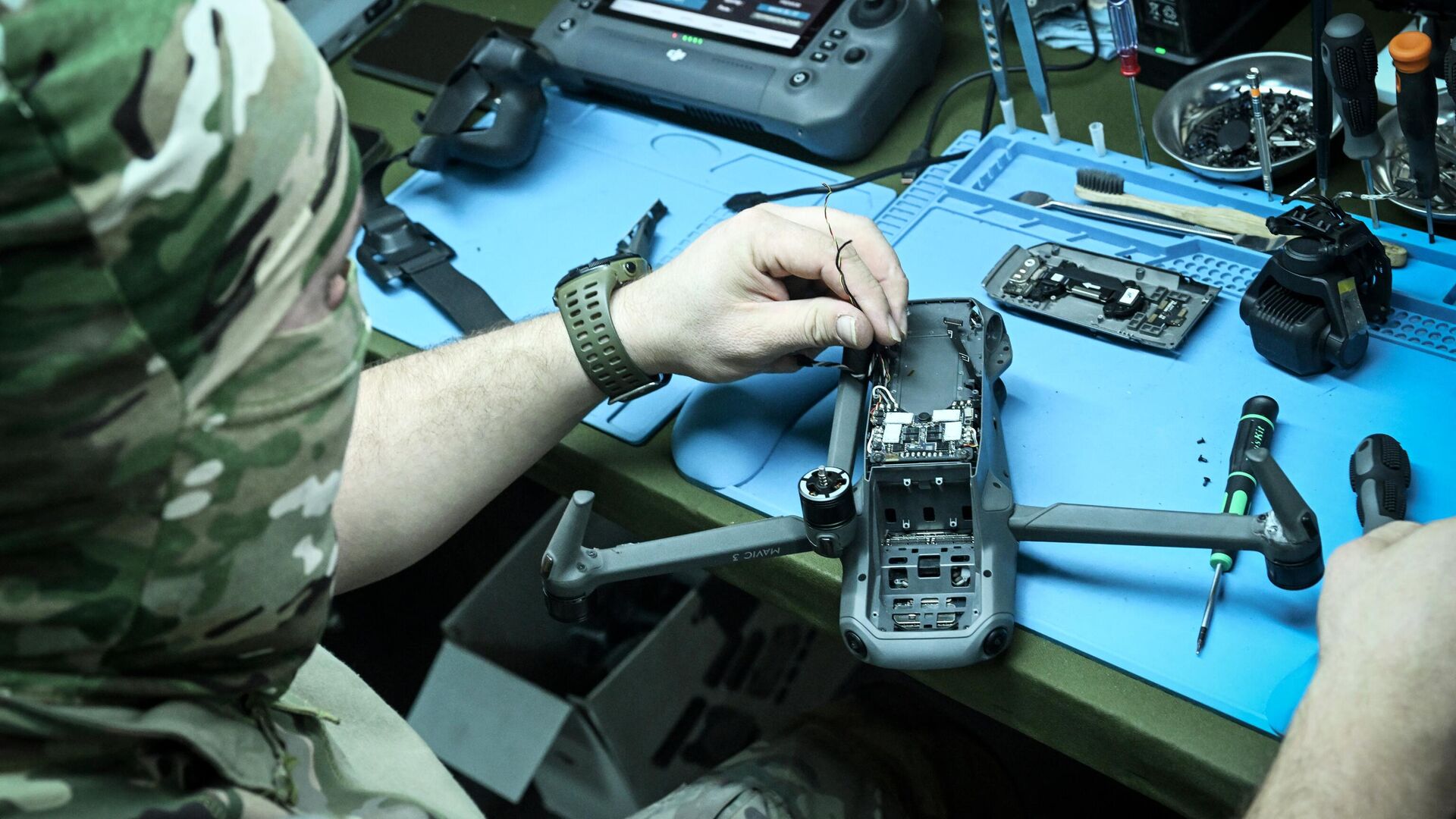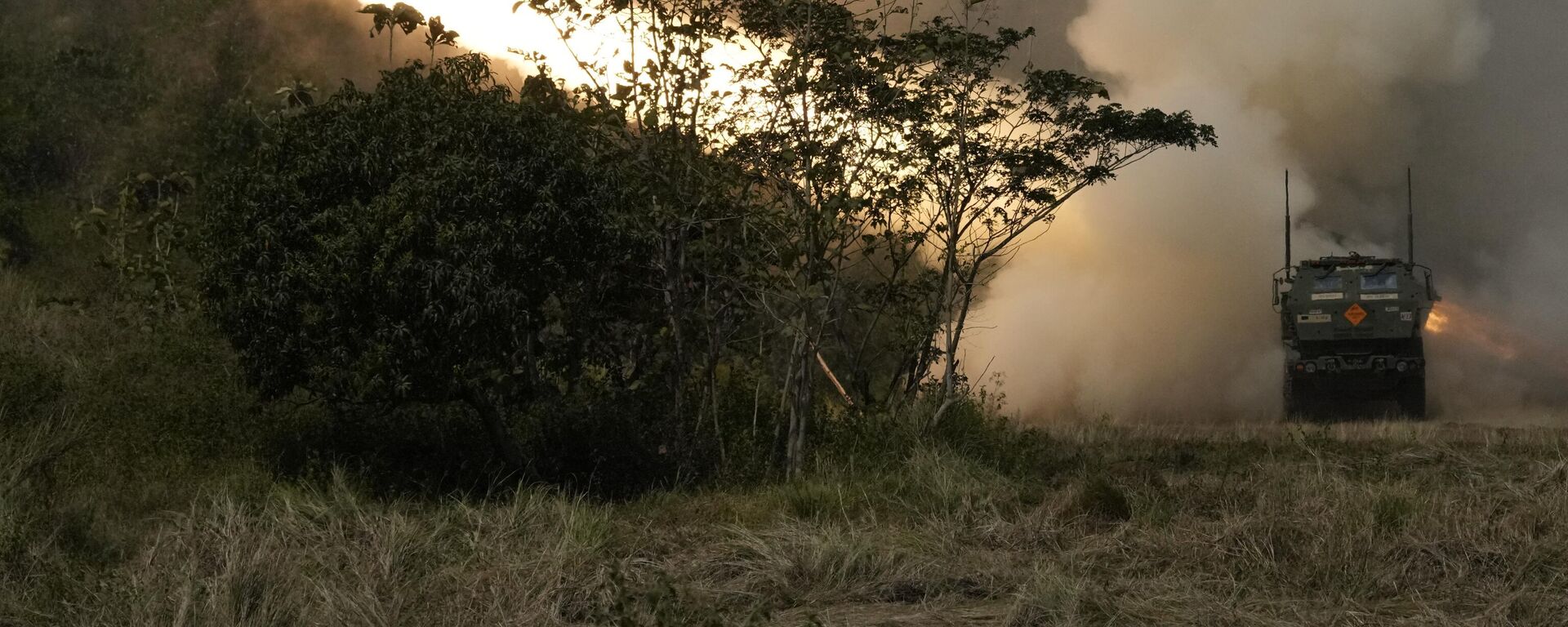https://sputnikglobe.com/20240331/good-use-of-nasa-budget-mars-program-technology-found-in-ukrainian-drones--1117668917.html
Worthy Use of NASA Budget: Mars Program Technology Found in Ukrainian Drones
Worthy Use of NASA Budget: Mars Program Technology Found in Ukrainian Drones
Sputnik International
Russian experts have identified batteries used by the US space agency NASA in the Mars program while studying captured Ukrainian drones, general director of the Centre for Integrated Unmanned Solutions told Sputnik.
2024-03-31T09:54+0000
2024-03-31T09:54+0000
2024-03-31T10:01+0000
russia's special operation in ukraine
ukrainian drone attacks on russia
ukrainian crisis
mars
nasa
drone
drone warfare
drone war
drone usage
ukraine
https://cdn1.img.sputnikglobe.com/img/07e8/03/1f/1117669168_0:160:3072:1888_1920x0_80_0_0_1a1198d2ce56a96d02d1703ffb5efcb4.jpg
Russian experts have found batteries used by the US space agency in the Mars program while reverse engineering captured Ukrainian drones, Dmitry Kuzyakin, general director of the Center for Development of Integrated Unmanned Solutions, told Sputnik.The center deals with the full cycle of first-person view (FPV) combat applications, from drone production to training and piloting unmanned aerial vehicles (UAV).He also said that these batteries are extremely expensive to use in such makeshift devices.The developer added that aluminum alloys similar to those used in the US space program were also found in the captured Ukrainian drones. According to Kuzyakin, the special properties of such an alloy are crucial in space, but useless in an ordinary drone.However, thanks to such a "filling", Russian engineers can obtain "a lot of useful information" and data, Kuzyakin concluded.
https://sputnikglobe.com/20240322/ukraine-lacks-capacity-personnel--resources-to-build-own-himars-1117481893.html
mars
ukraine
russia
Sputnik International
feedback@sputniknews.com
+74956456601
MIA „Rossiya Segodnya“
2024
Sputnik International
feedback@sputniknews.com
+74956456601
MIA „Rossiya Segodnya“
News
en_EN
Sputnik International
feedback@sputniknews.com
+74956456601
MIA „Rossiya Segodnya“
Sputnik International
feedback@sputniknews.com
+74956456601
MIA „Rossiya Segodnya“
ukrainian drones, nasa ukraine, ukraine nasa drones, drones nasa ukraine
ukrainian drones, nasa ukraine, ukraine nasa drones, drones nasa ukraine
Worthy Use of NASA Budget: Mars Program Technology Found in Ukrainian Drones
09:54 GMT 31.03.2024 (Updated: 10:01 GMT 31.03.2024) Russian experts have identified batteries and aluminum alloys used by the US space agency NASA in the Mars program while studying captured Ukrainian drones.
Russian experts have found batteries used by the US space agency in the Mars program while reverse engineering captured Ukrainian drones, Dmitry Kuzyakin, general director of the Center for Development of Integrated Unmanned Solutions, told Sputnik.
The center deals with the full cycle of
first-person view (FPV) combat applications, from drone production to training and piloting unmanned aerial vehicles (UAV).
"The first FPV drone we acquired had a battery similar to the one used by the US in NASA's Mars mission. It seems that Ukraine assembled FPV drones with its US 'partners', and these batteries were installed in order to use the drones in winter with severe negative temperatures," Kuzyakin explained.
He also said that these batteries are extremely expensive to use in such makeshift devices.
The developer added that aluminum alloys similar to those used in the US space program were also found in the captured Ukrainian drones. According to Kuzyakin, the special properties of such an alloy are crucial in space, but useless in an ordinary drone.
“It [aluminum alloy] consists of 70% ordinary alloys and 30% various homeopathic additives that provide aluminum stability in a vacuum. Why does an FPV drone need such aluminum?" Kuzyakin wondered.
However, thanks to such a "filling", Russian engineers can obtain "a lot of useful information" and data, Kuzyakin concluded.



